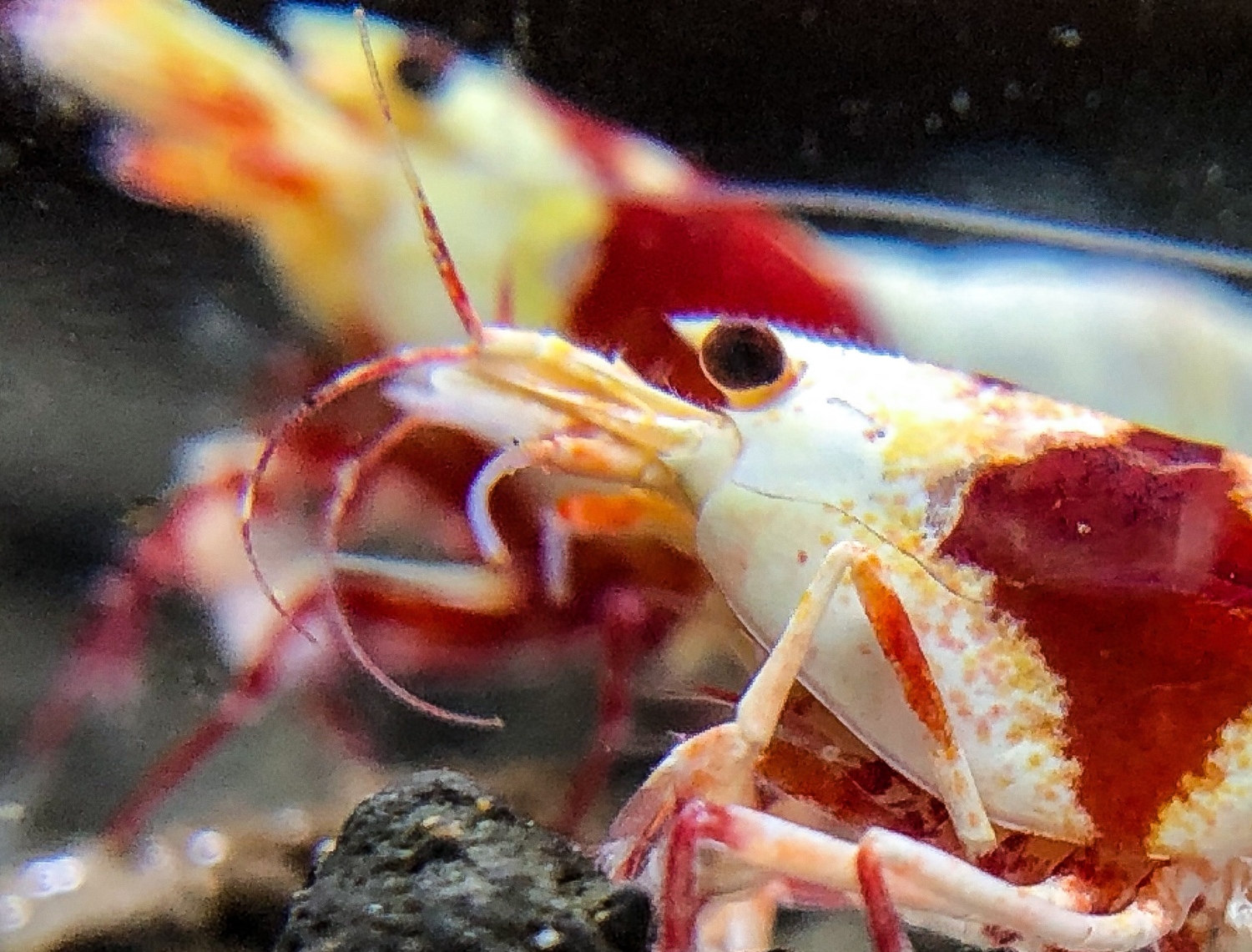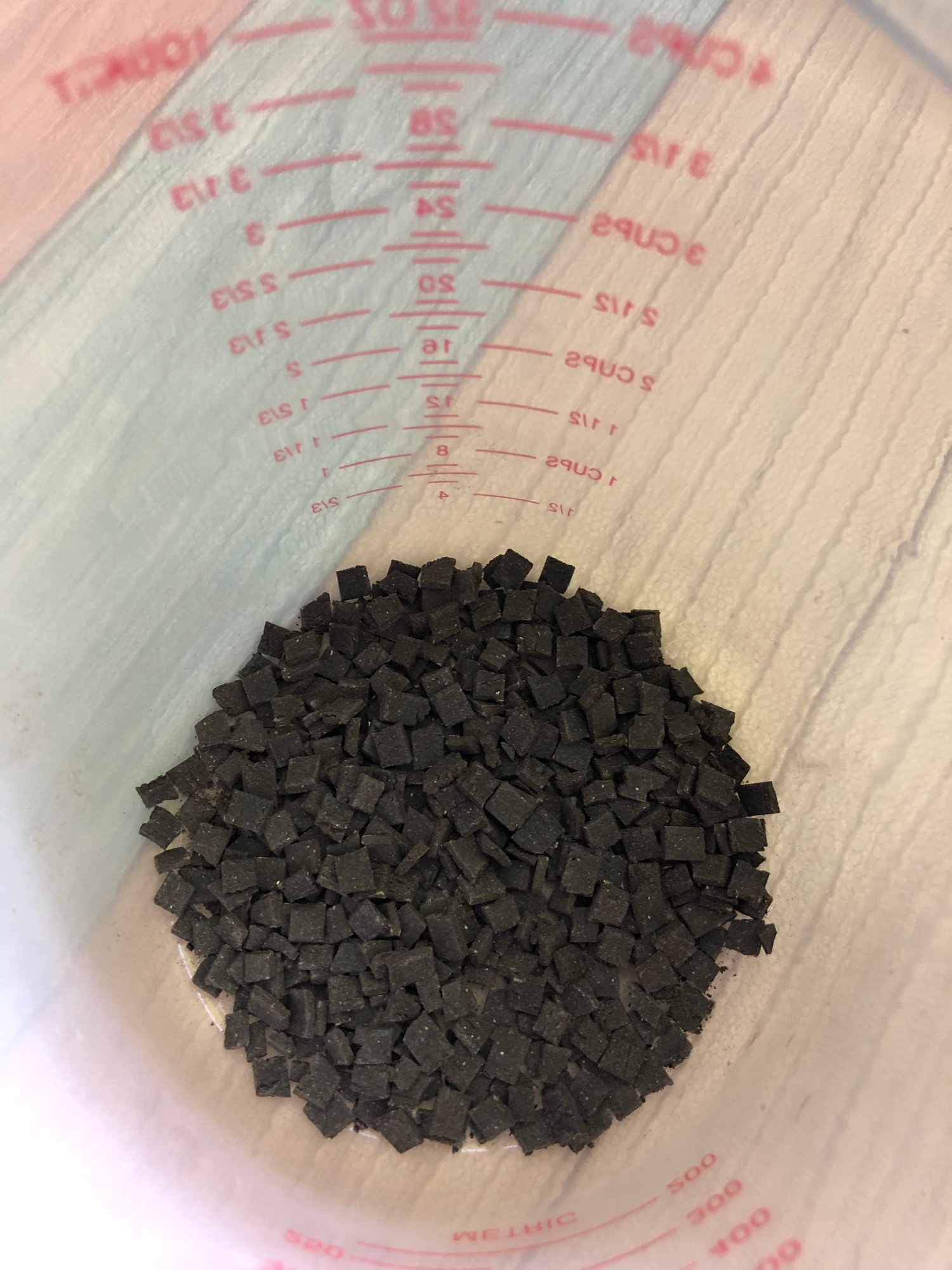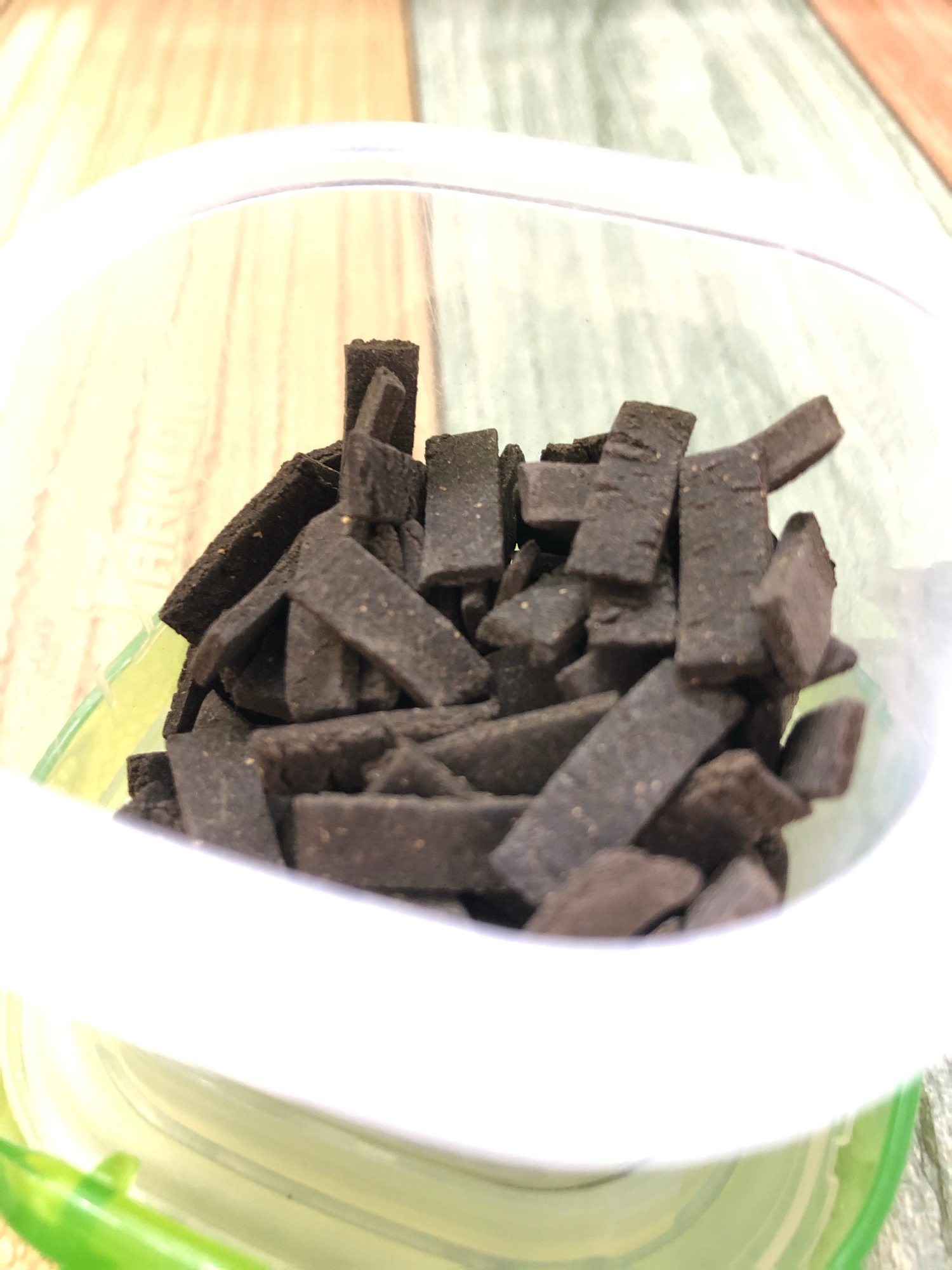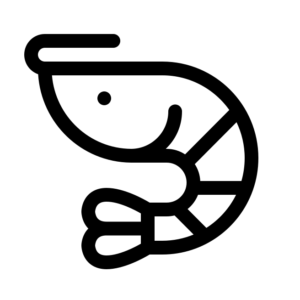Enjoy my most recent posts
The articles are being categorize into various sections and you can find them in the individual sections such as Shrimp, breeding, tips and others. On mobile devices all articles will be shown. If you want to find older articles please refer to Archive Should you not be able find an article you wish to read about or learn more on, please feel free to contact me using the Contact page.

One of the more commonly seen and easier to keep shrimp are the Pure Red Line. There has been a lot of documentation on this shrimp with a history of how they come about. However, I will be touching on more about keeping and breeding this shrimps.
One of the things about this shrimp is that it really like good water condition to thrive with robust coloration and continuous breeding. These PRL are able to take a range of water parameters. However, my preference for water parameters is shown below.
Water parameters:
- pH 5.8
- Total dissolved solids : 85-90
- kH : 0
- GH : 4
- Nitrate, nitrite, Ammonia 0
- Temp 24-26 degrees Celsius
Building on all the content that is already posted in this blog, I wanted to mention the process of selective breeding can still be applied. Most of the processes and methodology can be applied as well. In other words, it is important to get that fundamental right.
One of the key difference in so many PRL from my perspective can be broken down into a few broad categories.
For example:
- Color
- Red: is bright red to a brick red coloration without much fading in the front region.
- some have pinkish hue to it – as they age some have it pink but doesn’t cover the entire shrimp
- Red: is bright red to a brick red coloration without much fading in the front region.


-
- White: The white coloration sometimes have a yellowish tinge to it but predominately white. Yellow tinge does not mean it is of mix lineage, on the other hand if it’s all white and sparkling, it’s good you trace that lineage.
- Legs: Are they red, white or a mix? Or are there spider legs (if you see spider legs something isn’t right and I will classify them as CRS, it does happen in PRL but what i learn is a very very rare occurrence and doesn’t breed through to the next gen.


-
- Swimmerets : Are they yellow, white or red?

- Size
- Shrimp is of good large size 2-3cm at adulthood
- Head to body ratio: 1:3. It is important that it doesn’t look too distorted due to inbreeding. Many times the shrimp doesn’t have a good form where the head and body are 40:60 and some 20:80.
- Legs: proportionate not stringly due to poor diet, genetics and water condition
- Shell
- shell have few blemishes and are of certain thickness. Aggressive feeding can sometimes cause shrimp to have some “war marks” but they generally can recover after the next molt. This goes the same to the feelers of male.
-
- 2nd Abdomen shell segment(of Male Shrimp) the biggest one in the middle is round and big resembling a female, which would show a much more robust characteristic
- Thick, regularly spaced
- Thick Carapace
- colored Scaphocerite
- Visible – colored rostrum

- Age
- Age of shrimp can sometimes be determine by the hunched back of shrimp when the shrimp grows bigger
- another telltale sign is the Antennule curving down and backwards vs forward or upwards

With so many different type of shrimp food available in the market, they are in all kinds of shapes and sizes.
In my opinion most of the food size do not cater to our shrimp size and a good method will be to feed An amount that they are able to complete within an hour. Any left over food will eventually break down and pollute the tank water.


These pads are snip to smaller sizes so I can easily feed most of the tank and would be better to have 2 or more “piles” of shrimp feeding than 1 big ball because aggression during feeding doesn’t do any good.
I have tried this pad food for sometime and i have specially ordered this version 1 food because of its potency. The food is a staple complete food that can be fed daily or even mix with other food such as spinach etc.
In addition to this, the pad are also very good for neos and have great success with them. This can be fed to shrimplets as well as it breaks down into small powder on the outer edge giving the opportunity for shrimplets to consume.


This is as simple as it get, why are my shrimp dying? What are the main causes of shrimp death?
- Water Parameters
- This is the first reason that your shrimps are dying by the numbers – 1-2 per day or weekly. Why is water parameters the number 1 reason for shrimp death? The old adage goes like this, if you want to keep good quality shrimp, first learn how to keep good water parameters. If your tanks have good water parameters, everything else will fall in place.
- I have in my other post talk about water parameters and my water parameters recommendation.
- If my water parameters are fine – (like many of us) then why are they still dying?
- Source of shrimp
- This means that the source of where the shrimp came from be it from source, at source or during transit might have already weaken the shrimp.
- Ammonia poisoning, poor genetics, too much in-breeding
- Pick your source wisely and don’t mix sources! (Please refer to the 4 main criteria of shrimp breeding – under choose your breeder)
- Genetics of shrimp
- The genetics of shrimp from the start is already weak
- when a cross of two individually line bred shrimp comes together the difficulty level just increased many folds
- for example a PRL vs a BFT – the PRL have better and more stable genetics compared to a BFT but that doesn’t mean the BFT will die easier, they just don’t breed as quickly/as easy as the PRL. (Pure line)
- Too little or too much water change
- i usually recommend at least 10% water change and if the tank volume is large (100L) and a few shrimp, a 5% water change will do.
- On a very stable tank and shrimp, even changing 50% at once hasn’t proven to be an issue (Remember point 1 and point 2)
- Stirring too much soil up during water change, creating a sudden spike and then returning back to normal
- Source of shrimp
- Itchy hand syndrome
- There is no need to add bone meal, Cutterbone, decorative item, tons of plants, feeding excessively, adding wood, adding rock, adding any other thing other than reminerizer during WC
- Mixing source A,B,C,D shrimp in 1 tank – stick to your trusted source
- Putting your hand in there every few hours to move decorative item around.
- Feeding more than twice a day – if you have a lot of shrimp
- Your feed should be altered to the number of shrimps and should consume all of the feed within 2-3 hours. If not, cut the feed to a smaller portion and feed. if not, consider adding more shrimp.
- Adding new soil in large quantity inside an established tank, tried that – adult shrimps does ok, shrimplets die.
- Shrimp like all living things die
- All living things die – we like it or not. There is no way we can keep all 100% of our shrimp alive and this is esp. true if they’re genetically weak. For example i haven’t experience a PRL die for a long time but occasionally i still get a selectively line bred shrimp dead (it’s part and parcel of shrimp keeping)
- With the above, please note that if you’re doing selective breeding – have backup shrimp ready – That means if you have a tank ratio of 2M and 6F please have more Males and Females ready to go because if the 2M dies off, basically you have nothing to breed with.
- Plan your purchases carefully and if your budget permits have a good breeding ratio – 2M – 20F x 2 sets with additional 1-2 males as backup in other tanks
- For more in depth information – please read other post on breeding tanks.
The above is with the assumption you’re using RODI water as your primary water source during water change.
If you understand and fully grasp the concept, you’ll enjoy your shrimp breeding journey a lot better!


During this period of unknown certainly where businesses are slowing down and some come to a grinding halt. It is unfortunate some of the Companies globally fall short of their required revenue to keep them afloat. An increase in bankruptcy in most countries, also an increase in unemployment wade through this dire time.
It is unfortunate that i took the short end of the straw for one of the transaction with an Australian guy. With his refusal to pay for his package and shipping fee he too blocked me on messenger to cut off communication. I like to use this post as a warning to all that there are those few black sheep in the shrimp community that made it a better place. Many breeders refusal to share information openly unless you are a customer is the very reason why. However, i took on another approach with sharing information freely on the blog with all the information learnt first hand from Taiwan.
I have many avid followers in this blog and appreciative words to keep sharing. The reason i have slow down my writing is because i couldn’t get over the betrayal of trust – I have reached out to multiple people in the local community in Australia for help but i personally know it’s only hopeful; least i tried. I appreciate those who have tried knock some sense on him and have also agreed to boycott that person in future till the issue is resolved. However, i too know this is only temporary but this will not deter me to continue writing nor have an impact on my shrimp hobby.
The purpose of my blog in the very beginning and even till today is all about sharing and debunking myth from breeders who are out there trying to earn a fast one. From the feedback that i get locally and overseas; i know i have helped countless number of shrimp hobbyist from overpaying or even spending more than they actually need. It is a hard world out there and it is becoming difficult to ignore the fact that many are trying their best to sell their wares esp. during this dire times. While the white sheep outnumbered the black sheep in the community, i’ll continue to reach out to those who are keen to learn about the hobby.
I was fortunate to have the opportunity to learn from the masters directly in Taiwan with multiple trips to Taiwan in 2018/19 i took all the learning and translated it into what is written in the blog post. The investment to gather that knowledge, (remember that breeders only teach you when you are a customer) I wanted everyone to have that same level of knowledge not because they’re disadvantaged by language or otherwise. I still have information that i wish to share and i’ will continue to write when all this is said and done.
With that, i wish you and your families great health!





